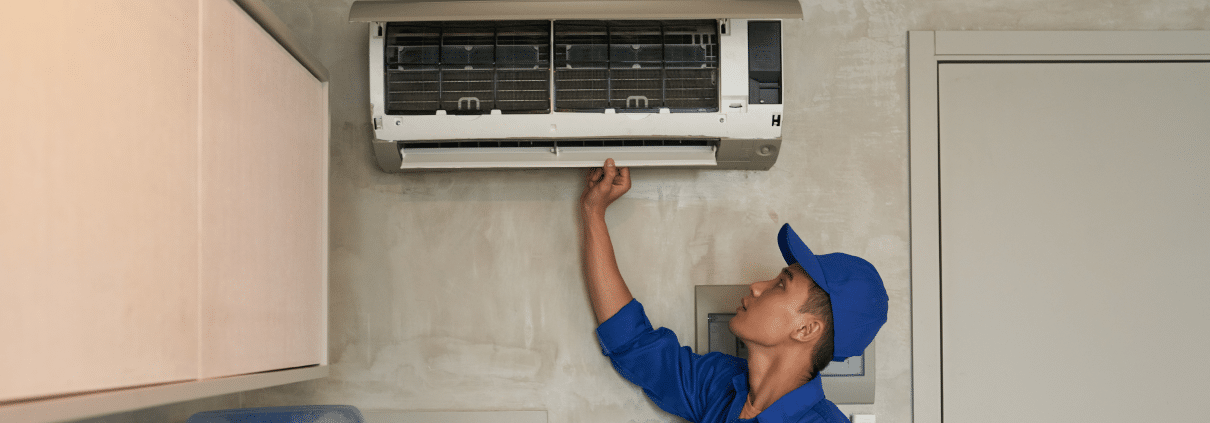How does an air conditioner work?
/in blog /by FrigotecUSRWhen it comes to cooling your home in summer, almost everyone opts for an air conditioner! But that's not all: an air-conditioning system can also be used to heat rooms in winter, replacing traditional radiators with a reversible air-conditioner. Today's air conditioner is certainly an essential element of comfort when it comes to regulating the temperature indoors, but it also offers significant energy savings.
But really, how does an air conditioner work? How does it produce cool air? Why can the same cooling device also act as a heating device, how does reversible air conditioning work? What is the physical principle behind air conditioning? These are all questions that can arise whether or not you have an air conditioner, and even more so when you want to install home air conditioning.
Through this article, we reveal everything you should know about air conditioning: how air conditioning works, but also how an air conditioner can also produce heat, what the different types of air conditioners are, the components that make up an air conditioner, etc. After all, to choose or install an air conditioner, it's worth finding out how it works.
And to find out more about air conditioning consumption, and discover the answers to all your questions, feel free to browse our detailed article on the subject.
First of all, what is an air conditioner?
An air-conditioning system is neither a cooler nor a fan. An air conditioner is an air-conditioning appliance used to maintain the air in a room or enclosed space at the required temperature and humidity. In general, air conditioner is the term associated with a device that produces cold and also heat in the case of a reversible air conditioner.
Generally speaking, an air conditioner comprises a compressor, a condenser, an expansion valve and an evaporator. Together, these components produce cold (or heat) according to a specific operating principle.
So how does air conditioning work?
An air conditioner doesn't blow air like a fan, but cools it thanks to the presence of a refrigerant that circulates in a closed circuit inside the unit and changes state. With the refrigerant, the air-conditioning system operates on the same principle as a refrigerator, but also like the operation of a heat pump (heat pump) that transfers calories from point A to point B according to cooling or heating requirements.
Thanks to the air conditioner's various components, the refrigerant circulates in a closed circuit, capturing calories and therefore heat from the room and releasing them to the outside. Calories (hot air) from the room are drawn into the evaporator (located inside the air conditioner). These calories heat the refrigerant, which is still in a gaseous state in the evaporator. This gas is then fed to the compressor, which increases the pressure of the gas, heating it even more. At the condenser, located on the outside of the air conditioner, a fan expels the heat stored by the gas, which at the same time turns to liquid. The fluid then flows to the expansion valve, where it drops in pressure, reverts to a gaseous state and drops in temperature even further. Finally, the fresh gas flows back into the evaporator, where it cools the surrounding air. A fan blows it back into the room. And so the cycle begins all over again, and now you know in a nutshell how an air conditioner works.
In the case of a reversible air conditioner, the cycle reverses when the heating mode is activated. In other words, in summer, it captures calories from the ambient indoor air and transfers them outside, and in winter, it captures calories from the outdoor air and diffuses them inside. The reversible system thus provides fresh air in summer and warm air in winter.
How air conditioning works: the different types of air conditioner
Generally speaking, there are two main air-conditioning families: monobloc and split. These families can then be subdivided into mobile monobloc air conditioners with exhaust pipe or split, fixed split air conditioners (wall-mounted air conditioners, cassette air conditioners), multisplit centralized air conditioning systems, or reversible air conditioners.
For a single-package air conditioner, the evaporator-compressor-condenser-expander assembly is in the same unit. In the case of split units, the evaporator is located on the indoor unit and the other components on the outdoor unit. For both types of air conditioner, operation remains the same.
Whatever the case, it's often essential to call in a professional for the installation of air conditioning. Because of the presence of the refrigerant and its handling, the know-how of an expert is fundamental. What's more, even the advice of an expert refrigeration engineer is always a great advantage when it comes to choosing the air conditioning system that best meets all your needs. All in all, at FrigoTech, we're always happy to answer your questions!



